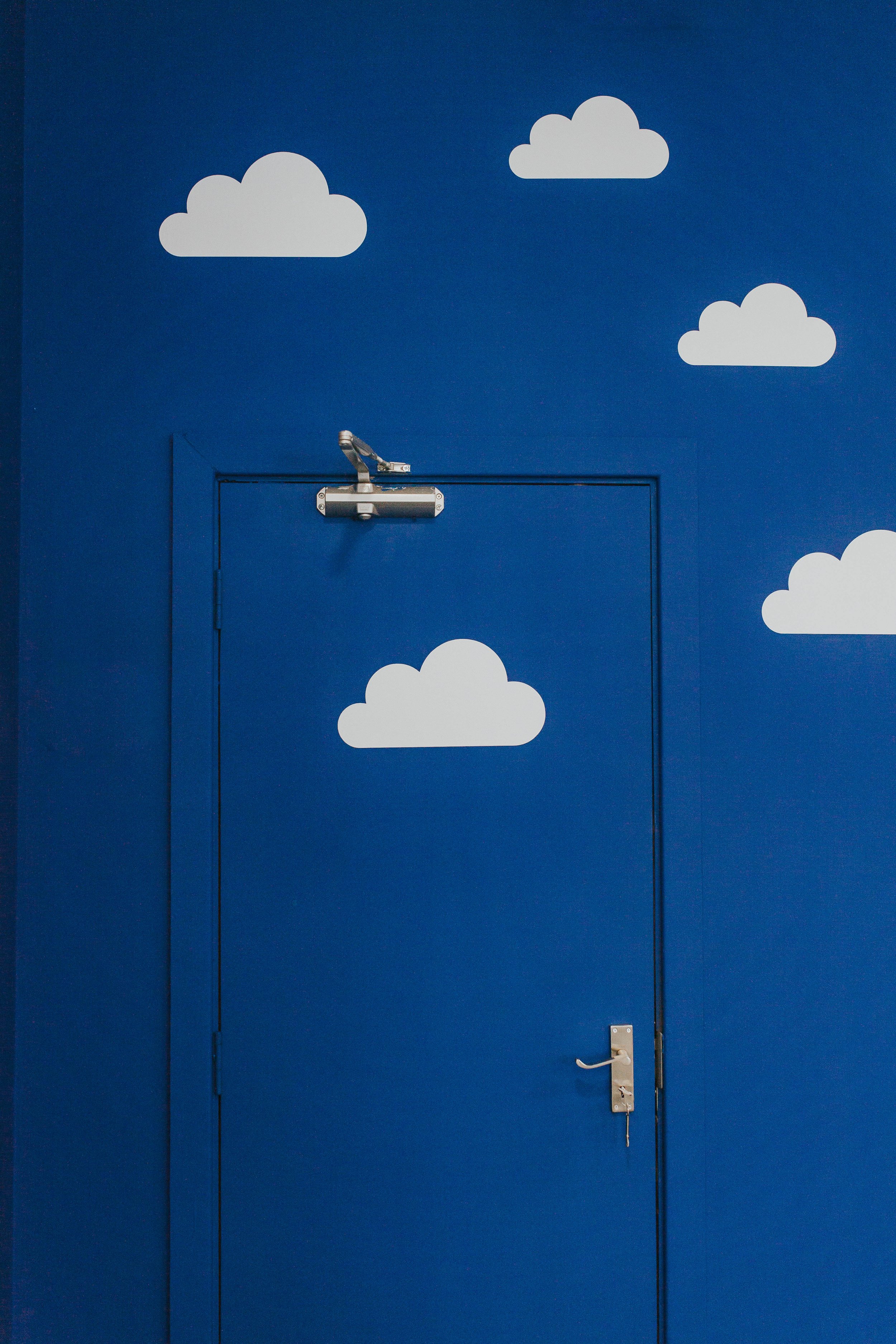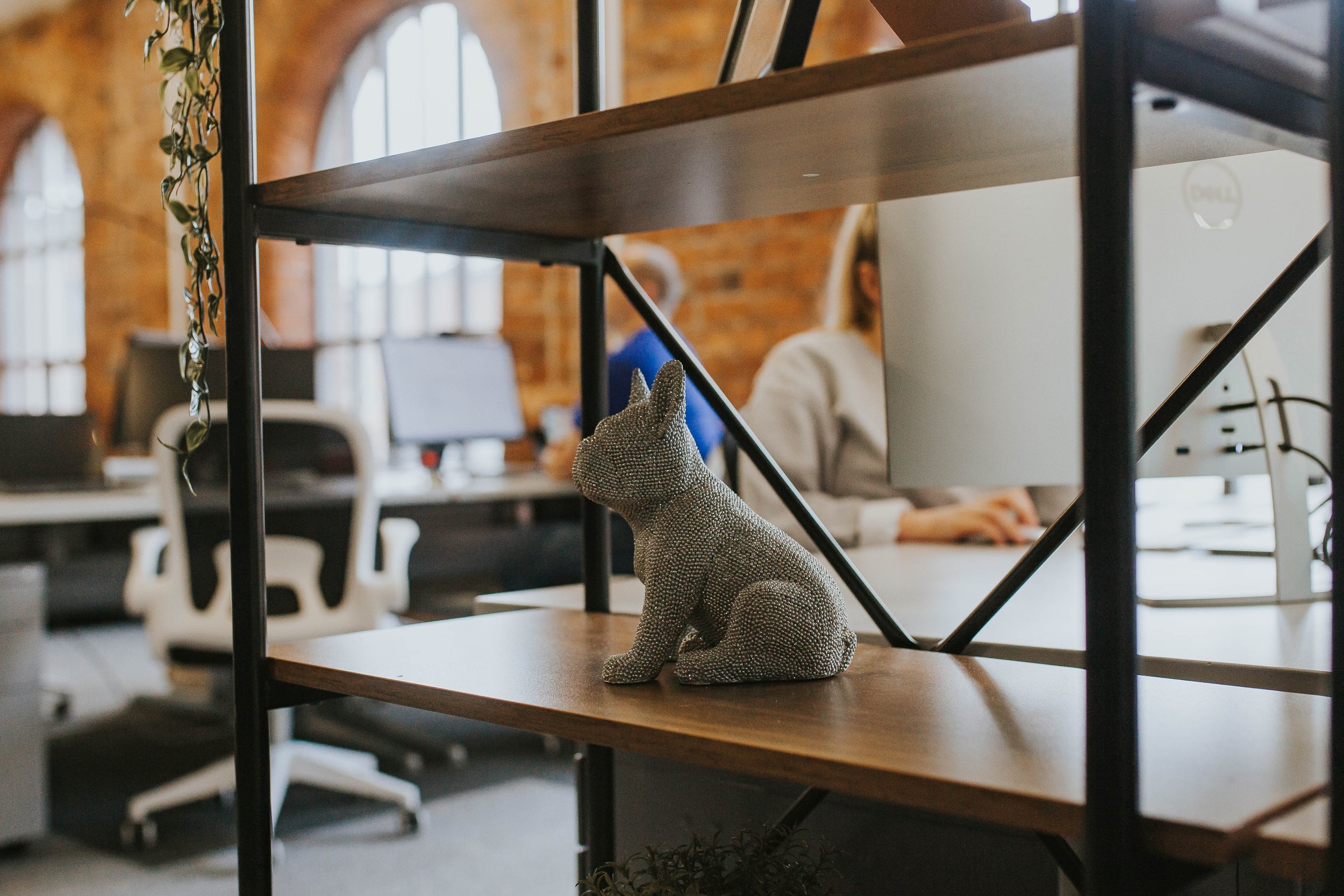The Cloud, The Office, and a sparkly French Bulldog.
WFH. We’re all familiar with the text-speak after two years of doing it. Love it or hate it, working from home is (probably) here to stay, one way or another. Scott Riley, founder and MD of Cloud Nexus knows all about it.
Scott set up his cloud computing business in 2019 just before the pandemic hit (ouch). Despite the hurdles, Cloud Nexus has grown almost exclusively on a remote working model.
So why on earth would anyone need - or want - to move their staff to a central office format when business was already booming with a WFH team? The expense, the hassle, the commute? We asked all the questions when Scott commissioned Moxie Interior Design Co to design a new office space for a growing team. What did they want out of the space? How could a single office serve them better than their existing model? What on earth is cloud computing anyway? (just me? OK then).
After completion, we returned to meet the team in their new habitat, and to understand more about the driving force behind creating and utilising a shared office space.
For anyone that has experienced WFH over the last two years, this interview is a compelling argument for the importance that a shared working environment still holds in the current mix of accepted working styles.
Becs Gardner - As a layperson, I would probably label Cloud Nexus as a tech company. It's a pretty neat box to put you guys in, but how would you describe yourselves?
Scott Riley - I guess people would chalk us up as a tech company, and at heart what we offer is based around technology but the tech is just the tool. Almost like a paint brush or an instrument, the tech is not the end product for us. I’d like to think we’re a people company. Oftentimes technology is a pain that stops business getting done. If we can remove that headache for someone, we’re enabling communication, efficiency, and business change, and that’s all about people interacting with other people.
BG - Scott, you have built Cloud Nexus over the past two years or so, almost exclusively on a remote working model. It works, it’s successful, everyone’s getting paid. What made you want to take the leap from home working very successfully to a central office space?
SR - There are several answers to this question, so bear with me. Firstly, we found home working to be a great concept, but as a full-time practice it becomes troublesome. We would do regular check-ins with our team and the feedback we would hear time and again is that people found it hard to separate work from home and home from work. If there was an unfinished task, or an email that came in after hours they would feel compelled to deal with it rather than leave it until the following day. From a mental health perspective people felt pressured, isolated, and that there was always more they could do to “keep on top of things”. That’s just not sustainable.
Secondly, the move to a central space was about developing the culture of the business. Home working served us well through the pandemic (as if we had a choice!) but there were so many barriers to team building. The interpersonal relationships were difficult to maintain, because we would go from one structured meeting call to the next, and then work alone in between. There was no cohesion. We missed the fun, the energy, those serendipitous moments between colleagues that progresses what you’re working on together. So, in part it was about bringing people together, but we also wanted a central hub that captured the spirit of Cloud Nexus as a business, and reflected the culture that we want to grow. You don’t get to have that kind of influence in someone’s spare bedroom / office space.
BG - A key part of our design process is getting to the bottom of what our clients love, but equally what they hate. Was there anything you tried to steer clear of when setting up the new space?
SR - We were really keen to avoid the corporate image of a lot of IT tech firms. We wanted to be the opposite of boring, corporate, or stuck in a seedy basement somewhere conforming to Technical Support stereotypes! I’ve worked in big corporates before in really uninspiring spaces with really traditional working practices. We wanted to be the exact opposite.
BG - So can you put this space into words? Tell us how it serves you now, and how it reflects the culture of Cloud Nexus.
SR - A lot of our clients come to us because they don’t understand the tech and they’d rather talk to real humans to solve their problems. I wanted this space to reflect those qualities and reassure our clients that we are real, friendly, approachable, uncomplicated. We’ve gone for a look that might be more akin to a creative agency, it’s a space to get work done but also to relax and enjoy spending time with everyone in the team. We have this great flexibility to work formally at a desk, informally at the breakfast bar or take calls in the lounge area. We have a multi-function breakout and meeting zone which really maximises our space. It feels big, airy, fun and like a home from home. The team just say “it doesn’t feel like work” and that’s the best endorsement I think.
BG - You’ve been in the office a couple of months now, what have you learned as you’ve transitioned from one way of working to another?
SR - I think we’ve learned and demonstrated to ourselves that we can do work-life balance better than pre-pandemic habits would suggest. We’ve always focused on outcomes rather than clockwatching or presenteeism, so for us coming
back into the office was never about forcing people back to a space where they could be monitored. We all still work from home on occasions if there’s an appointment or a delivery, but we’ve also tried to offer people flexibility within this space too. We wanted to deliver a variety of working options, and to give it a real homely feel. Working in an office doesn’t always have to be 100% about the business, it’s about the people more than anything.
BG - Have you experienced any other unexpected benefits to being back in the office?
SR - Yes, definitely. It’s easy to create an inflated online persona to try and generate business, but when you see a company with established premises like these, where people are really happy doing what they do, it reassures prospective clients. A great space like this equates to a successful, reliable business, not a one person outfit hiding behind a laptop. It assures people that we’re making money, we’re looking after our team, we get the job done: it’s a tick in a subconscious “legitimate business” box and has become a bit of a sales tool in its own right. The space here is making a huge difference, when people see it they love it.
BG - Final question: In the last year or two we’ve seen a massive shift in working practices; with people being forced to work from home.
More traditional industries that couldn’t have contemplated home working have had to adopt it as a practice and teamed with Covid hanging around for now, there’s almost a reticence to moving back to centralised working. Do you have any predictions for workplace practices in the near future?
SR - I can only speak from our experience but as I said earlier: home working is one solution, but it can’t be the only solution. I think there has to be a mix available to everyone. Previous resistance to flexible working has been pretty well squashed by everyone’s experience during the pandemic, and it’s been demonstrated that it’s physically and technologically possible. But as we’ve seen, working alone for extended periods of time is no way to operate full time, and for our own sanity we need to introduce boundaries between home and work. I don’t think we’ll ever see a return to full time working in any one place, I think there has to be a mix regardless of the industry you’re in.




